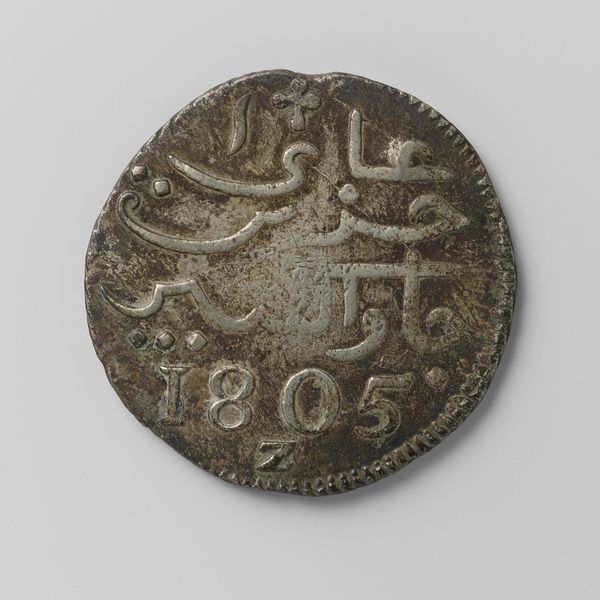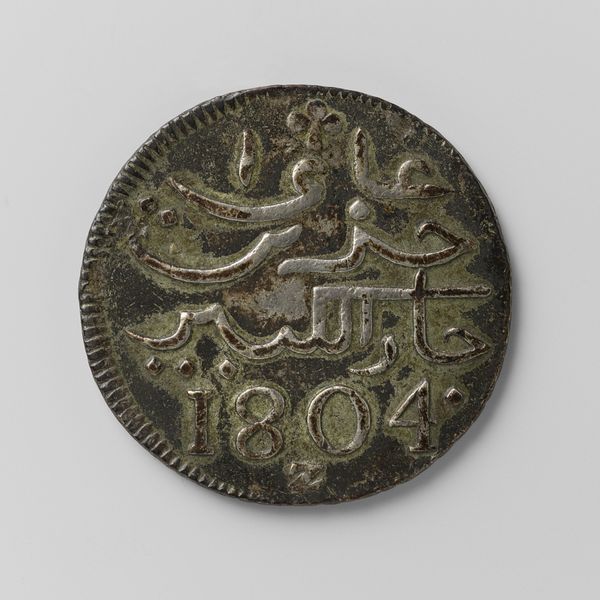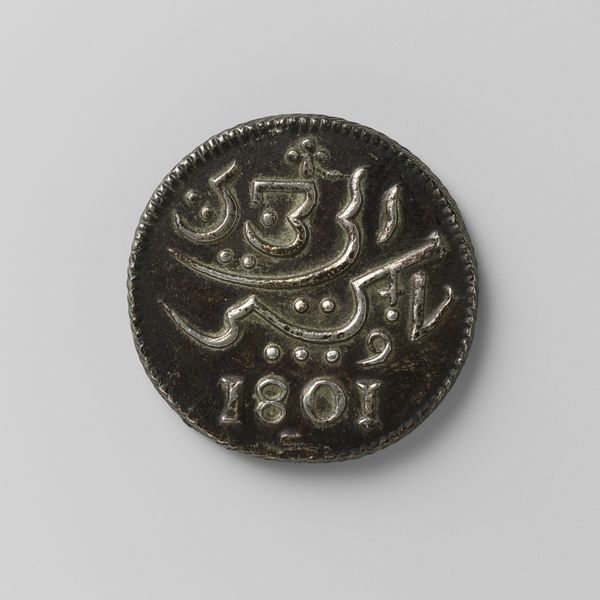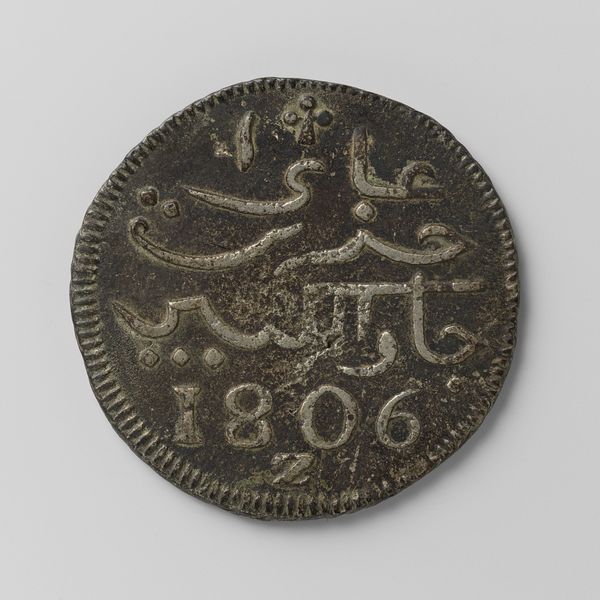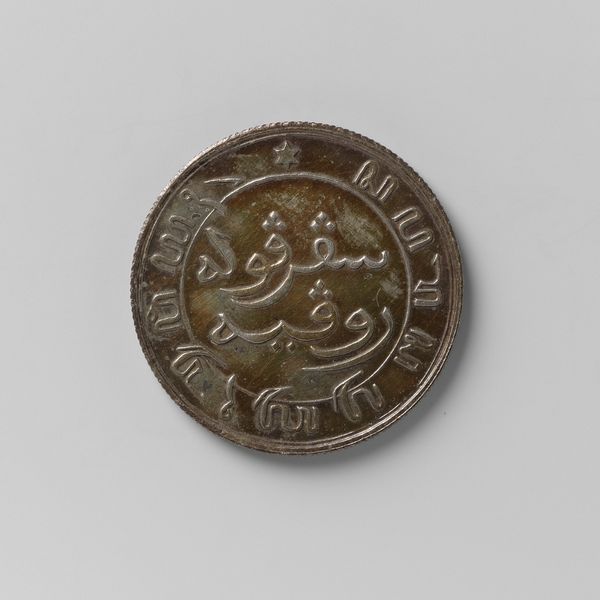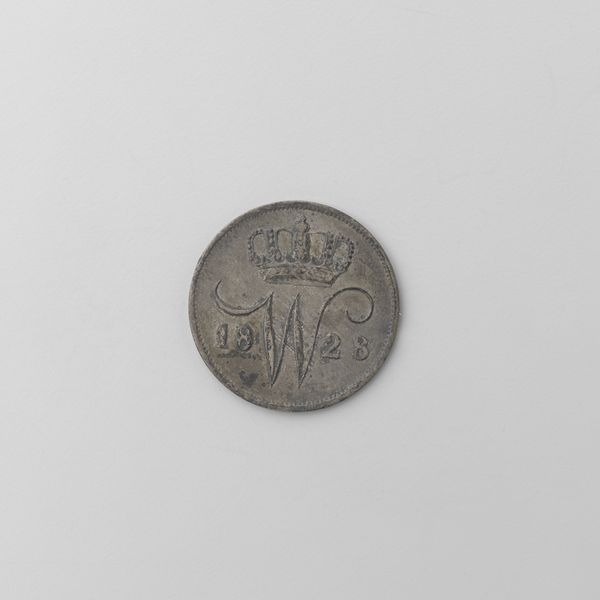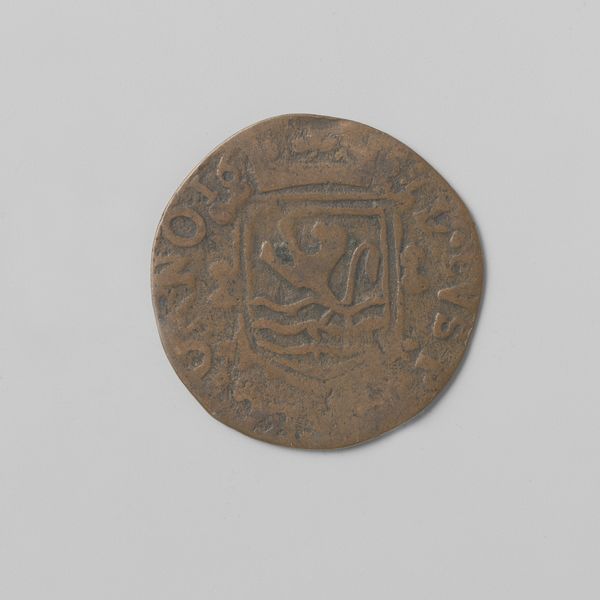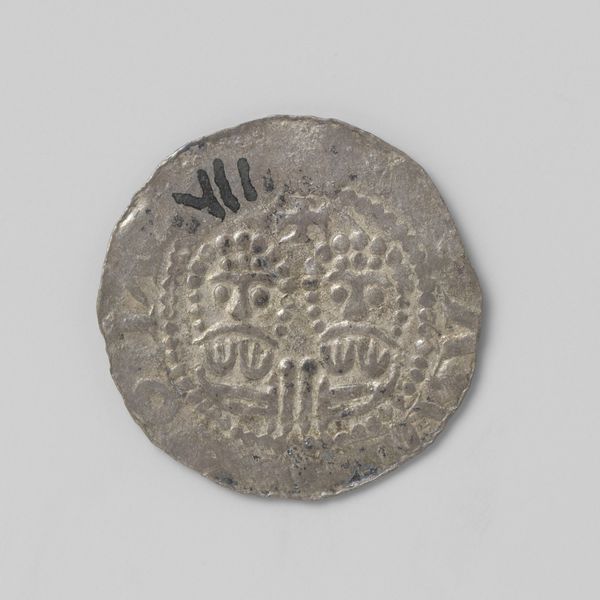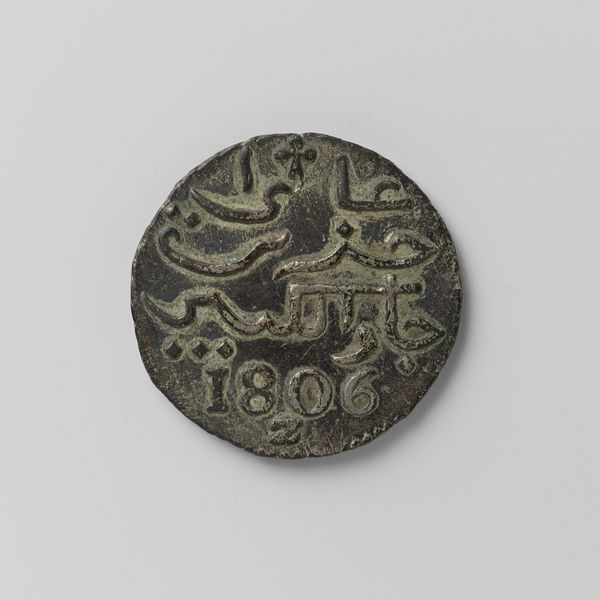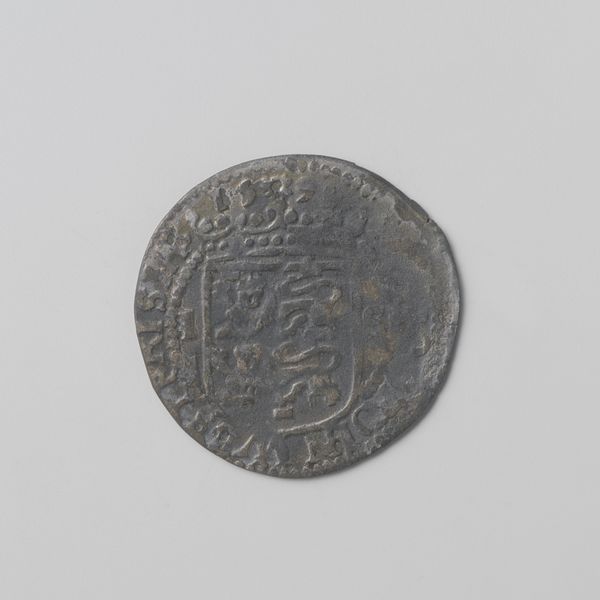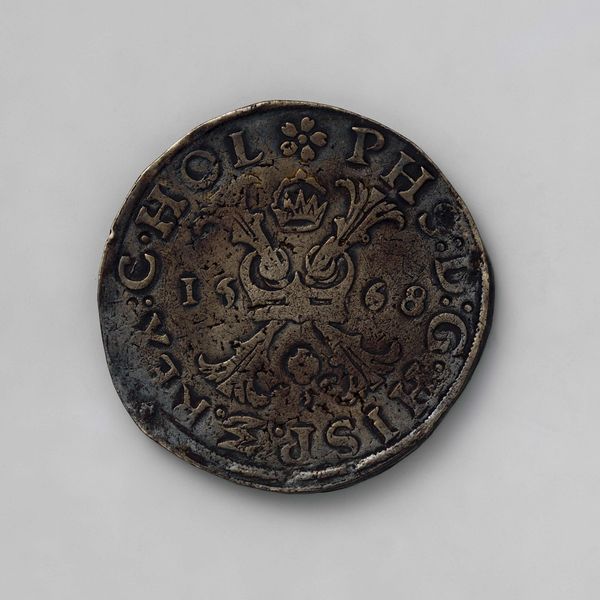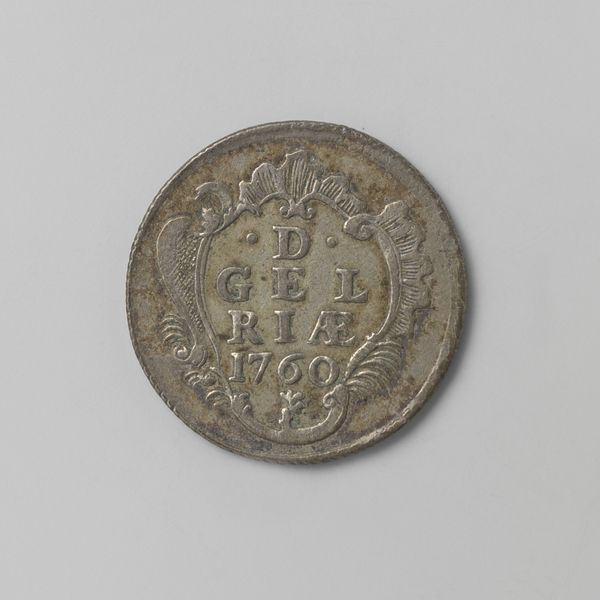
silver, metal
#
silver
#
metal
#
geometric
#
ancient-mediterranean
#
islamic-art
Dimensions: diameter 3.2 cm, weight 12.03 gr
Copyright: Rijks Museum: Open Domain
Curator: This is a silver coin, specifically a "zilveren ropij", from the Dutch East Indies, Java, dating back to 1808, now residing at the Rijksmuseum. It represents the period of the Batavian Republic. Editor: You know, even divorced from its historical context, it has a lovely austere beauty. That muted silver glow coupled with the almost gothic looking inscription gives it this serious otherworldly presence. Curator: Absolutely. Coins like this served not just as currency, but as potent symbols of authority. Their circulation reinforced Dutch colonial power in Java and the broader East Indies during a tumultuous period of European and local politics. Consider how it blends colonial ambition with Islamic art motifs. Editor: Colonial ambition cleverly disguised, perhaps? It's funny how often you see power veiled behind artistry. But still, you know, when I look at this, the fact that it actually went places and was perhaps someone's daily bread and butter makes its real value more important. Can we call it the soul of history in metal form? Curator: That's poetic! We can certainly view it as an object carrying the weight of economic and political history. It embodies the entanglement of Dutch administration, Javanese society, and global trade networks in the early 19th century. You can see those trade influences reflected in those complex inscriptions, the symbols that give us historical bread crumbs to follow and see whose thumb was on the scale. Editor: So true, but also look at how time's gentle abuse has softened those hard edges of silver, giving it that soft muted lustre! It makes you consider all that a small coin witnessed on its journey. It's like holding a secret in your hand, something no amount of social science could explain away. I think a story lives here. Curator: That interplay between object and human is what drives history forward, in many ways. That coin, pressed into palms, traded for goods, landing in marketplaces – a microcosm of colonial economic history etched into a small piece of metal. Editor: You see economics and colonial administration. I see secrets, poetry, and human touch! Still, I love what it has brought up, something tangible. Curator: It seems even a small piece of currency like this can prompt expansive reflection on both historical structures and intimate narratives.
Comments
No comments
Be the first to comment and join the conversation on the ultimate creative platform.
